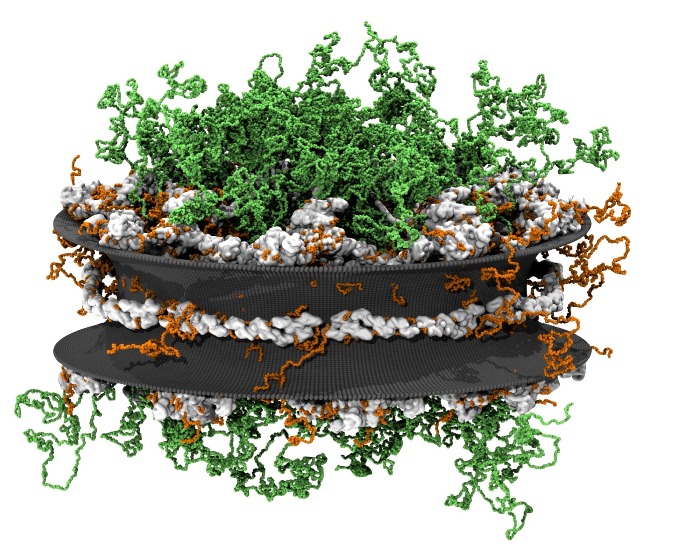Research
Research in the Onck group aims at understanding the micromechanical and functional behavior of (biological) materials based on an accurate description of the underlying (bio-) physical mechanisms. Computational techniques (e.g. molecular dynamics, finite element methods, finite volume approaches, solid-fluid interaction techniques) are being used to explicitly account for the physical mechanisms at the relevant length scales.
The research can be grouped in two main topics:
(1) Biophysics (in collaboration with the Van der Giessen group)
In this work we study fundamental processes in the cell in order to elucidate the biophysical mechanisms that are responsible for transport of biomolecules through the nuclear pore complex, the transmission of mechanical forces through the cytoskeleton, protein aggregation in neurodegenerative diseases and membrane fusion by studying the conformational dynamics of surface proteins. For more details, follow this link.

(2) Bio-inspired responsive materials for lab-on-chip and soft-robotic systems
This work aims at understanding and designing bio-inspired and responsive materials by developing computational models (molecular dynamics, solid-fluid interaction techniques and finite-element models) for application in, e.g., microfluidic, lab-on-chip and soft-robotic systems. Emphasis is on actuation by light and magnetic fields. For more details, follow this link.

| Last modified: | 29 August 2023 1.23 p.m. |
